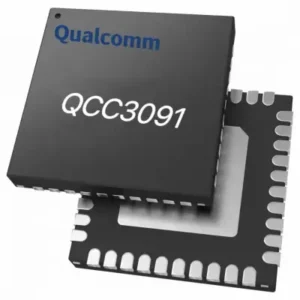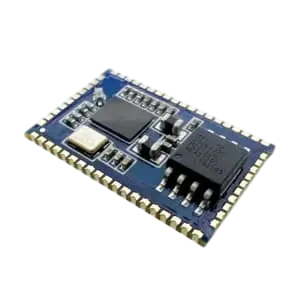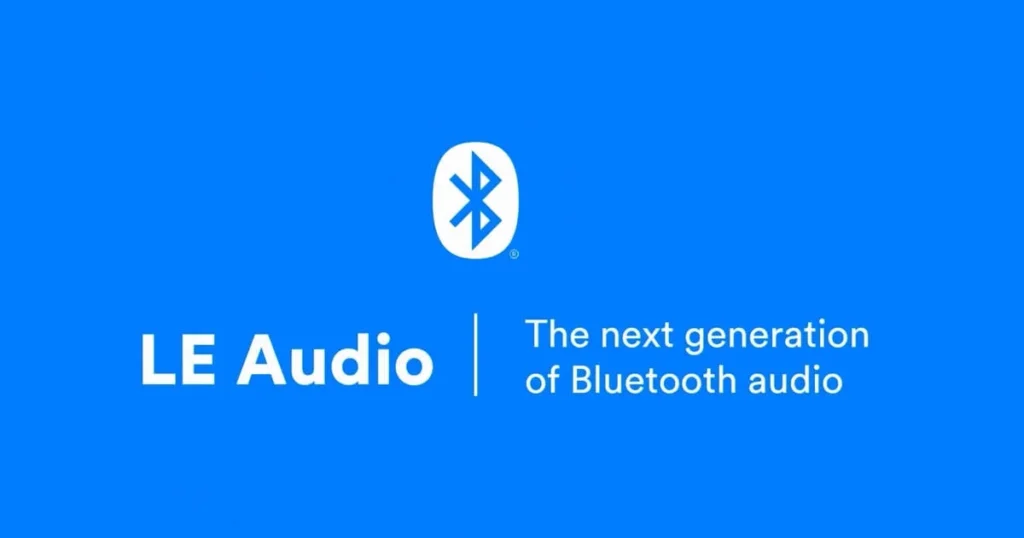Shopping around for earbuds can be confusing, and there’s lots to consider. Should you get a chipset with Lossless support or one with low-latency focus? Should you look for advanced ANC or the new LE Audio LC3 codec? While there’s plenty of reading on those questions, we’re here to give you a breakdown of the Qualcomm QCC3091 chip and the QCC3086 audio chipset. This article explains the design, the features, the codecs, and the differences between these two Qualcomm audio solutions.
Overview — What Is the QCC3091 Chip?
The QCC3091 chip is part of the Qualcomm audio chipset family designed for true wireless earbuds. It includes dual 240 MHz DSPs. It supports Bluetooth 5.4. It works with aptX Audio, aptX Voice, aptX Adaptive, aptX Lossless, and Snapdragon Sound. It also provides a 3-mic hybrid ANC system.

The QCC3091 chip is optimized for premium earbuds. Because it integrates Snapdragon Sound, it supports high-resolution audio and clear voice communication. These models can deliver aptX Lossless playback, which preserves full CD quality over Bluetooth. They also include voice features based on aptX Voice. This makes them well suited for users who want better calls as well as music.
Most earbuds with the QCC3091 chip combine ANC with audio fidelity. The hybrid 3-mic system captures environmental noise and cancels it in real time. This makes the chip strong in loud areas, and it allows earbuds to adapt to changing surroundings. The chipset handles adaptive ANC without sacrificing sound quality.
Because the chip includes dual DSPs, it can process multiple streams efficiently. It runs codecs, ANC algorithms, and Snapdragon Sound enhancements at the same time. This makes it suitable for both everyday listening and demanding use cases like gaming or streaming.
In terms of performance, the QCC3091 chip is robust. There are already earbuds from SOUNDPEATS and KZ Audio that use it. These models are promoted as Snapdragon Sound headphones with Lossless audio. Reddit discussions confirm that this chipset is considered high-end compared to older Qualcomm parts. Another example is the use of this platform in multipoint earbuds, which connect to two devices at once.
Overall, the QCC3091 chip is designed as a premium Qualcomm audio chipset for true wireless earbuds. It provides codecs, ANC, and Snapdragon Sound features in one integrated platform.
Overview — What Is the QCC3086 Chip?
The QCC3086 audio chipset is another member of the Qualcomm audio family. It is designed primarily for USB dongles and adapters, not only for earbuds. It focuses on ultra-low latency performance. Measurements show delay around 19–23 ms.

The QCC3086 supports Bluetooth 5.4. It includes aptX and aptX Adaptive. It also integrates LE Audio LC3 codec support, with Auracast broadcasting. This means a single device can transmit audio to multiple receivers.
Most products with the QCC3086 audio chipset are adapters. For example, USB-C dongles for gaming laptops or Bluetooth transmitters for televisions. Android Authority highlights this chipset for competitive gaming use, where low delay matters more than ANC or Lossless codecs.
Because the QCC3086 focuses on latency, it does not emphasize ANC. Public documents do not mention hybrid ANC systems. Instead, the chipset is described in terms of Bluetooth 5.4 efficiency, LE Audio readiness, and Auracast features.
Another example is its integration in gaming dongles that ship with some earbuds. In those cases, the earbuds may use a QCC309x chip, while the dongle uses QCC3086 to ensure sub-20 ms latency. This pairing shows how Qualcomm separates use cases across chipsets.
In short, the QCC3086 audio chipset is about low latency and LE Audio. It is part of the same Qualcomm audio chipset family, but it serves different roles compared to the QCC3091 chip.
Feature Comparison at a Glance
| Feature | QCC3091 | QCC3086 |
| Bluetooth Version | Bluetooth 5.4 | Bluetooth 5.4 |
| Snapdragon Sound Support | Yes | Yes |
| Major Codecs | aptX, aptX Voice, aptX Adaptive, aptX Lossless | aptX, aptX Adaptive; LE Audio LC3 + Auracast |
| ANC Support | Hybrid 3-mic Adaptive ANC | Not specified |
| Latency (Gaming Focus) | Low but unspecified | Ultra-low (~19–23 ms) |
| Ideal Use | True wireless earbuds with high-res audio | USB dongles, adapters, ultra-low-latency focus |
Gaming & Latency Performance
Gaming earbuds latency is a major concern for players. The QCC3086 excels in minimizing delay. Tests show latency of around 19–23 ms. This level is low enough for competitive shooters, fighting games, and rhythm titles.
Because the QCC3086 is built for dongles and adapters, it connects directly to PCs or consoles. This reduces the processing steps that increase delay. The result is ultra-low latency audio transmission. For gamers, this can mean faster reaction and better timing.

The QCC3091 also supports low-latency modes. It is part of Snapdragon Sound headphones that advertise lag-free audio. However, its design puts more emphasis on aptX Lossless and hybrid ANC. This means latency is low but not always as low as the QCC3086.
In terms of balance, the QCC3091 is suited for users who want both gaming and music. It delivers high-resolution codecs, ANC, and decent gaming modes. The QCC3086 is optimized purely for sub-20 ms performance, making it the stronger choice for competitive latency.
Another example comes from earbuds that ship with two connection methods. When used in standard Bluetooth mode, the earbuds rely on the QCC3091 chip. When paired with a QCC3086 dongle, latency drops further, showing how the two chipsets can complement each other.
Audio Codec Capabilities & LE Audio Support
The QCC3086 supports the new Bluetooth 5.3 LC3 codec. This codec is part of LE Audio. It is more efficient than SBC and offers better latency. It also enables Auracast, which allows broadcast audio to multiple receivers.

Because of this, Bluetooth 5.3 LC3 codec earbuds and adapters using QCC3086 are considered future-ready. Reddit discussions describe Auracast as a feature that could transform public audio sharing, such as in airports or gyms.
The QCC3091, in contrast, supports the full set of aptX codecs. It includes aptX Audio, aptX Adaptive, aptX Voice, and aptX Lossless. It is part of the Snapdragon Sound platform, which combines high-resolution audio and low-latency modes.
In terms of codec variety, the QCC3091 has the advantage. It covers both voice and music at a high level. The QCC3086 focuses on LC3 and broadcast capabilities. Each reflects its target use case: earbuds with high-end audio versus dongles with low delay.
Another example is SOUNDPEATS earbuds with the QCC3091. These are promoted for aptX Lossless playback. Meanwhile, gaming dongles with the QCC3086 emphasize sub-20 ms latency and Auracast demos.
ANC, Voice, and Power Efficiency
The QCC3091 offers hybrid 3-mic Adaptive ANC. This system uses multiple microphones to detect outside noise. The signal is processed in real time, and unwanted sound is cancelled. This allows the earbuds to adapt when you move between quiet and noisy environments.

Because the QCC3091 chip integrates ANC at the hardware level, it delivers strong results. Earbuds with this chipset also include voice enhancement, which improves clarity during phone calls. Reviews confirm that background noise is reduced without harming vocal quality.
Another example is its use in office environments. Users report that the QCC3091 chip reduces chatter and air conditioning hum. In terms of performance, this makes it practical for both travel and daily work.
The QCC3086 audio chipset does not highlight ANC. Public documentation focuses on latency and LE Audio features. It appears that ANC is not a primary capability of this chipset. Because of that, the QCC3086 is less suitable for earbuds that need strong noise control.
In terms of power efficiency, both chipsets support Bluetooth 5.4. The QCC3091 balances codec processing, ANC, and battery life. The QCC3086 optimizes constant low-latency transmission. In practical terms, this means the QCC3091 is efficient for music and calls, while the QCC3086 is efficient for gaming and streaming.
Ideal Use Cases — Which Chip Should You Choose?
The QCC3091 chip is designed for premium true wireless earbuds. It supports aptX Lossless for high-resolution music, hybrid ANC for noise reduction, and Snapdragon Sound for complete codec coverage. This makes it ideal for music lovers who also want strong call performance.

Another example is earbuds for commuters. The QCC3091 chip provides ANC for train or bus noise, plus Lossless playback for music. In this case, the chip covers both entertainment and communication.
The QCC3086 audio chipset is designed for dongles and adapters. It offers ultra-low latency around 20 ms. It also supports Bluetooth 5.3 LC3 and Auracast broadcast. This makes it ideal for competitive gaming setups or public sharing environments.
For example, a PC gamer can use a QCC3086 dongle to reduce audio delay in FPS games. Another example is Auracast in gyms, where one broadcast can serve many headphones. These use cases reflect the design goals of the QCC3086.
In terms of choice, the QCC3091 is best for premium earbuds with balanced features. The QCC3086 is best for adapters and devices that prioritize latency above everything else.
Final Takeaway
The QCC3091 chip is a powerful Qualcomm audio chipset. It combines aptX Lossless, hybrid ANC, and Snapdragon Sound into one platform. It is best for true wireless earbuds where sound quality and noise control matter.

The QCC3086 audio chipset is the low-latency specialist. It supports LE Audio LC3 and Auracast, and it delivers delay under 20 ms. It is best for USB dongles, adapters, and gaming devices.
Both are part of the Qualcomm audio chipset family. Both use Bluetooth 5.4. But their focus is different. The QCC3091 is about high-resolution sound and ANC. The QCC3086 is about latency and broadcast audio.
In terms of performance, they are both strong. Most consumers will be satisfied with the QCC3091 in earbuds. Competitive gamers or adapter users may prefer the QCC3086. Another example is a hybrid setup, where earbuds use the QCC3091 and the bundled dongle uses the QCC3086. Together, they deliver premium sound and ultra-low latency.
So, Qualcomm QCC3091 vs QCC3086 – which is better for earbuds? The answer depends on priorities. The QCC3091 is better for music and ANC. The QCC3086 is better for latency and LE Audio.
FAQ – Qualcomm QCC3091 vs QCC3086
What is the QCC3091 chip used for?
The QCC3091 chip is used in premium true wireless earbuds. It supports aptX Lossless, Snapdragon Sound, and hybrid ANC.
What is the QCC3086 audio chipset designed for?
The QCC3086 audio chipset is designed for dongles and adapters. It focuses on ultra-low latency and LE Audio support.
Does the QCC3091 support Snapdragon Sound headphones?
Yes. The QCC3091 chip includes full Snapdragon Sound support. It covers aptX Audio, aptX Voice, aptX Adaptive, and aptX Lossless.
Do Bluetooth 5.3 LC3 codec earbuds use the QCC3086?
Yes. The QCC3086 supports the new Bluetooth 5.3 LC3 codec. It also enables Auracast broadcast audio.
Which chipset is better for gaming earbuds latency?
The QCC3086 delivers ultra-low latency around 20 ms. The QCC3091 provides low latency but emphasizes high-resolution audio and ANC.